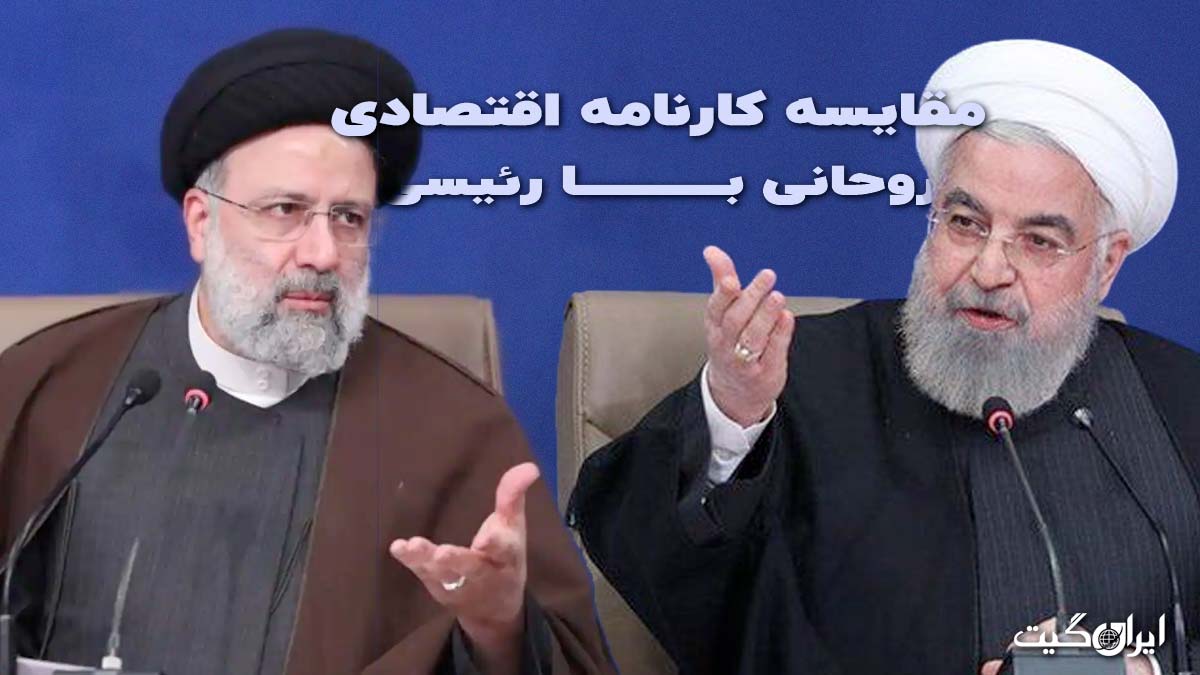Comparison of the Economic Records of Rouhani and Raisi
In the past 20 months, Ebrahim Raisi’s government has consistently emphasized its success in improving economic factors and the living conditions of the people. The thirteenth cabinet, citing certain statistics and figures released by government institutions, repeatedly reiterates this claim. Among the most significant claims of the thirteenth government is success in controlling inflation, which has faced strong reactions from economists and experts. On the other hand, members of Raisi’s cabinet have continually attacked Hassan Rouhani’s government, blaming the dire living conditions of the people on the poor performance of the twelfth and eleventh governments. But is this claim true?
To assess this claim of Ebrahim Raisi’s government, it intends to compare various economic indicators between the twelfth and thirteenth governments. Therefore, a three-part report has been prepared, with the first part examining the most important factor in assessing the country’s economic conditions, namely the inflation rate.
Raisi or Rouhani: Who is Responsible for the 50% Inflation?
In general, economists believe that the monetary and banking policies of each country can lead to the intensification or mitigation of inflation. The Iranian economy, despite having deep structural differences from global models, is no exception to this rule. In other words, controlling or intensifying inflation does not stem from individual-centric policies but depends on the actions and policies of the Central Bank and ultimately the governments.
Ebrahim Raisi’s government has been in power for over 20 months, and the responsibility for the policies adopted in various fields lies with him and his chosen cabinet. The Central Bank, which has been entirely obedient to the Ministry of Economy and the President, cannot justify the current 50% inflation by blaming the twelfth government or shirk its responsibility.
Of course, Rouhani’s government was in a similar situation, and despite significant differences with Raisi’s government, the responsibility for inflation above 30% lies with the members of the twelfth cabinet and presidency. In other words, inflation is not a legacy passed from one government to another; rather, it is the incorrect policymaking of governments that causes inflation rates to intensify and jump by more than 20% in just 20 months.
Fact-Checking the Claim of Inflation Control in Raisi’s Government
As mentioned earlier, since Ebrahim Raisi took charge of the executive branch, he has consistently emphasized controlling inflation in the thirteenth government. We have repeatedly heard from Raisi and other cabinet members about controlling inflation at around 16%. But is this claim true, and has Raisi’s economic team reduced inflation by 16 percentage points compared to what they inherited?
Field observations and economists’ statements repeatedly refute such a claim. However, to examine this claim, one must refer to reports from the Iranian Statistics Center and cannot rely on observations alone. According to what the Iranian Statistics Center has published, the annual inflation rate when Hassan Rouhani handed over the government to Ebrahim Raisi was about 39%. Currently, this economic indicator for December 2022 is reported to be over 46%.
Even during the best days when Raisi’s team was in power, the annual inflation rate fluctuated around 38%. This means that even if we take the lowest inflation during the 20-month presidency of Seyyed Ebrahim Raisi as a benchmark, we only see a 1% decrease compared to the last month when Rouhani’s government was in charge.
However, Raisi and the thirteenth cabinet members unusually and strangely reference a report issued by the Central Bank, which was released under the directive of the Central Bank Governor Ali Salehabadi, and compare it with the Iranian Statistics Center report, which has a completely different calculation basket from the Central Bank. According to this report, the inflation rate during Rouhani’s government was over 60%, and Ebrahim Raisi’s government managed to control inflation by 16%.
The point is that the thirteenth government’s economic team makes claims that do not root in reality, without mentioning the computational differences between the Iranian Statistics Center and the Central Bank in determining the inflation rate.
A Look at Raisi’s Record in Controlling Inflation
Looking at Ebrahim Raisi’s government’s record over the past 20 months and based on reports from the Iranian Statistics Center, the average inflation rate in the past 20 months is calculated to be over 45 percentage points. Meanwhile, the average inflation rate during the twelfth government was recorded at about 38 percentage points.
In fact, it can be said that Hassan Rouhani’s government, at the peak of sanctions following the U.S. withdrawal from the JCPOA, managed to handle an economy with inflation 7 percentage points lower than the average inflation rate during Raisi’s government. In other words, the rate of the rial’s depreciation during the twelfth government at the peak of the JCPOA crisis under Trump’s withdrawal was 7 percentage points less than the current conditions.
However, Ebrahim Raisi and his chosen cabinet, in a situation where the opportunity to revive the JCPOA was fully available, and the government could have taken a logical approach in this regard, have intensified inflation by more than 7 percentage points. It should be noted that all these statistics and figures are extracted from reports by the Iranian Statistics Center and are not from unofficial sources. Although economists believe that the inflation rate announced by the Statistics Center is significantly lower than the actual inflation rate in the country, this report only uses official statistics published by the twelfth and thirteenth governments.

